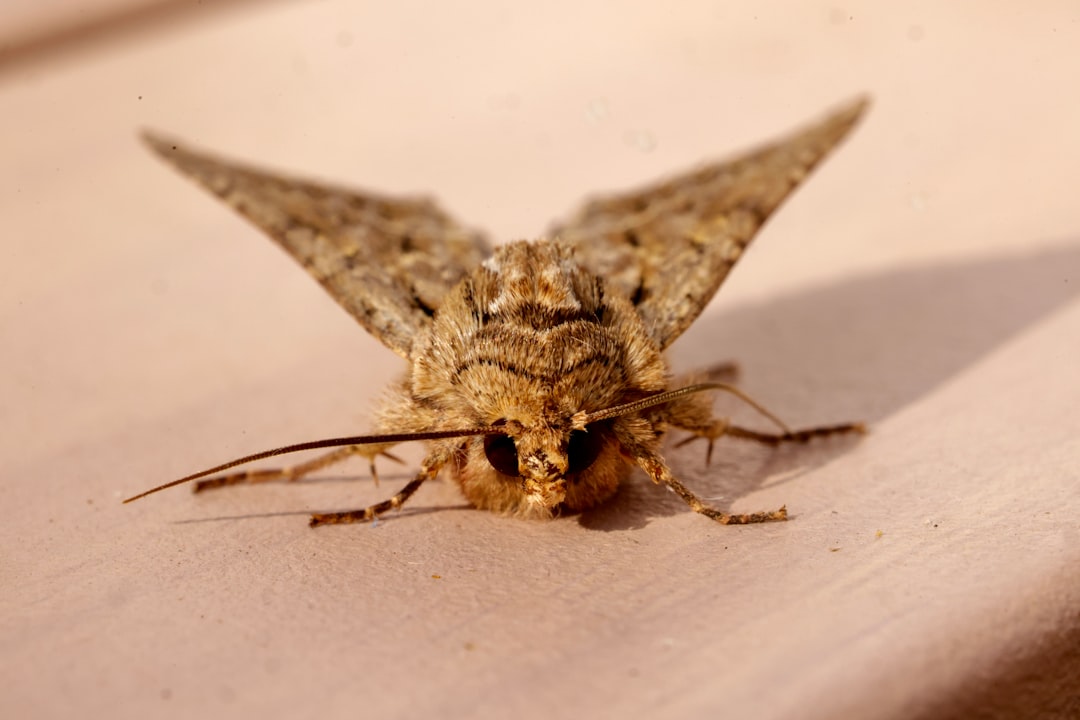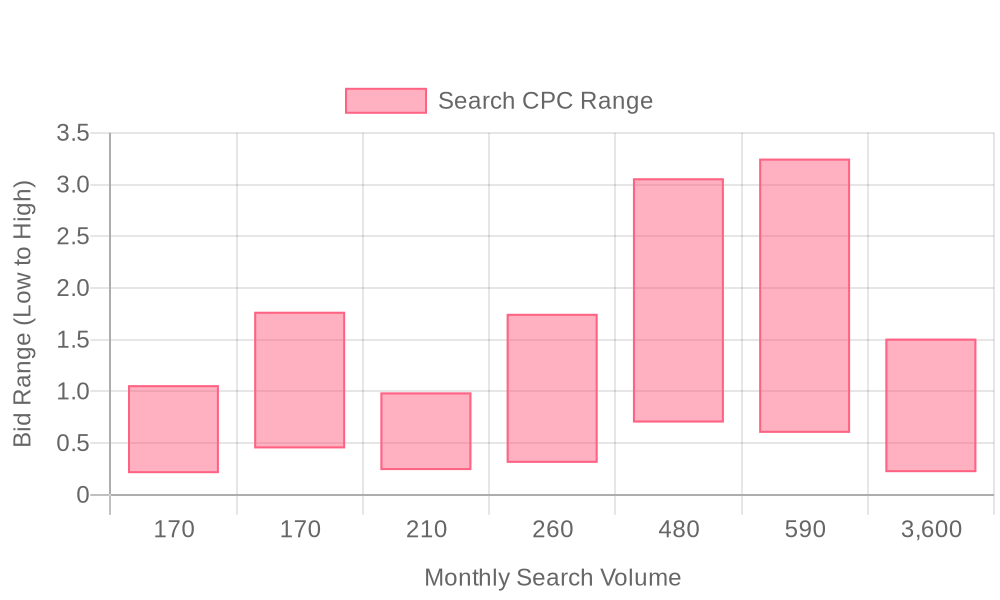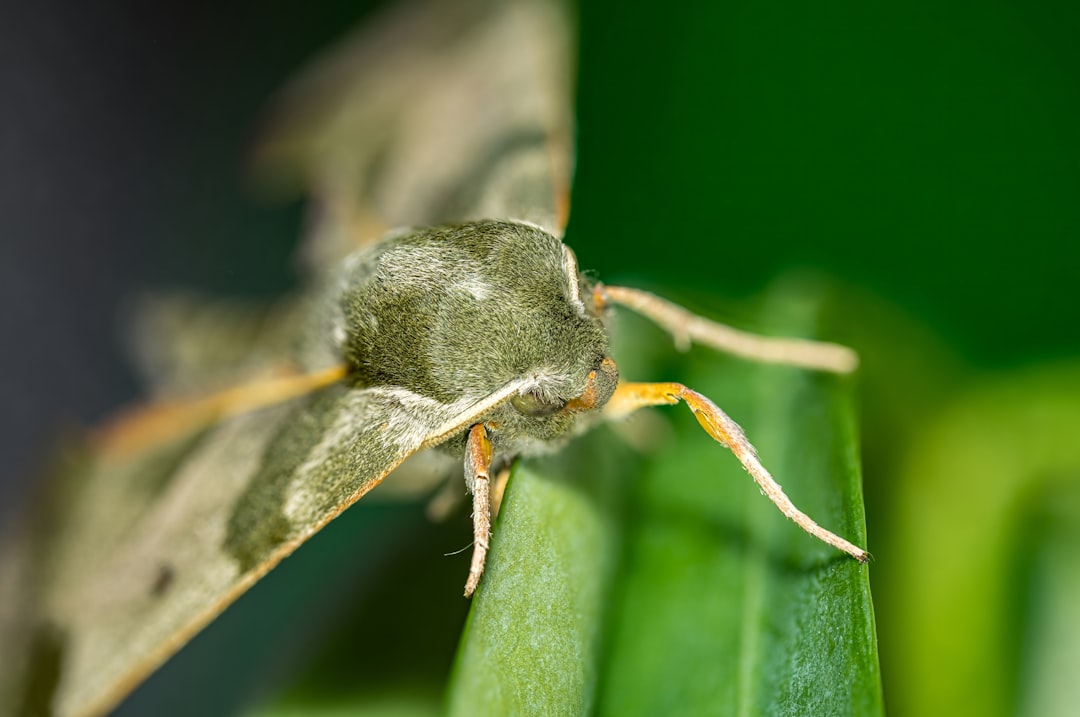
Supercharge your lead generation with a FREE Google Ads audit - no strings attached! See how you can generate more and higher quality leads
Get My Free Google Ads AuditFree consultation

No commitment
Supercharge your lead generation with a FREE LinkedIn Ads audit - no strings attached! See how you can generate more and higher quality leads
Get My Free Google Ads AuditFree consultation

No commitment
Supercharge your lead generation with a FREE Meta Ads audit - no strings attached! See how you can generate more and higher quality leads
Get My Free Google Ads AuditGet My Free LinkedIn Ads AuditGet My Free Meta Ads AuditFree consultation

No commitment
Supercharge your lead generation with a FREE Google Ads audit - no strings attached! See how you can generate more and higher quality leads
Get My Free Google Ads AuditFree consultation

No commitment
In today's evolving digital landscape, Google Ads serves as a pivotal tool in attracting highly targeted traffic, particularly for specific industries like pest control. However, missed high‑value prospects due to traditional tracking limitations can lead to lost opportunities. By leveraging the power of Google Ads combined with modern solutions, businesses focused on moth prevention can effectively capture high-intent prospects searching for solutions. Benefits include precise targeting, measurable results, and seamless integration with both online and offline marketing efforts. This outline provides a roadmap for leveraging Google Ads to successfully attract and convert leads in the moth prevention industry, focusing on aspects like keyword strategy, audience segmentation, and campaign optimization.
Moth prevention businesses face unique challenges in capturing buyers who often research discreetly and act urgently when damage is discovered. Delivering tailored digital campaigns that meet this intent not only accelerates lead flow but also positions your brand as the immediate solution for high-value prospects. To better identify and nurture these high-intent leads, leverage real-time visitor identification to reveal companies and individuals actively searching for moth prevention, even if they haven’t filled out a form.
A data-driven, multi-channel approach is essential for modern pest control advertising. By integrating Google Ads for Moth Prevention with SEO and email marketing, teams increase coverage across the buyer journey, ensuring no in-market opportunity is missed and every touchpoint reinforces your value proposition.
To streamline your lead generation and campaign management, get started for free with Sona and unlock advanced tools for identifying, segmenting, and converting your most valuable moth prevention prospects.

Moth prevention presents a unique challenge in digital marketing: the audience is highly specialized, often searching with urgent intent for very specific pest control solutions. Google Ads enables businesses to intercept these high-conversion prospects at the peak of their need, driving immediate engagement and reducing the risk of losing them to competitors.
Seasonality drives sharp spikes in demand for moth control services and products, making campaign agility critical. Google Ads offers the ability to quickly launch or adjust campaigns during these windows, so brands can capitalize on surging interest before it wanes. With robust tracking, marketers gain end-to-end visibility on every engagement, capturing the full journey from first click to closed deal. When marketers sync enriched audience and lead data directly into Google Ads and CRM platforms, they ensure that follow-ups are timely, relevant, and informed by real buyer intent, maximizing both response rates and ROI.

Moth prevention requires digital marketing strategies that meet customers where they are in the buying journey. A multi-format Google Ads approach boosts engagement and delivers measurable growth for pest control and prevention providers. For in-depth tactics tailored to pest control businesses, this Google Ads guide for pest control offers actionable insights to help agencies and owners enhance their lead generation efforts.
Ready to increase your moth prevention leads? Get started for free with Sona.

Growth-minded pest control and moth prevention teams are consistently seeking new avenues for market expansion and more precise engagement. Identifying untapped opportunities requires moving beyond traditional digital marketing tactics and broad keyword targeting, towards a more nuanced analysis of audience intent and competitor dynamics.
When integrated with unified data infrastructure, these strategies allow pest control marketers to move beyond guesswork and activate real-time, intent-based segments. High-value, in-market accounts receive targeted moth prevention ads, conversion tracking spans both online and offline touchpoints, and enriched audiences can be synced directly into advertising platforms and sales workflows for seamless, closed-loop attribution. Get started for free with Sona.

Audience segmentation is crucial for moth prevention campaigns that want to maximize budget efficiency and deliver relevant messaging. Segmented strategies outperform generic approaches by ensuring ads reach individuals and businesses with real intent, resulting in higher conversion rates and less wasted spend. Marketers in the pest control industry who embrace segmentation gain a measurable advantage in campaign relevance and lead quality with insights from the Sona blog.
Creating a segmented approach begins by identifying distinct customer groups. For moth prevention, segments are typically defined by geography, service needs, and preferred communication channels. For example, urban homeowners may seek rapid-response moth control services, while commercial textile managers prioritize long-term prevention solutions. By aligning targeting with these segments, advertisers can match messaging, offers, and landing pages to each audience, overcoming the limitations of one-size-fits-all pest control ads. For more industry-specific tactics, review this guide to pest control Google Ads.
Overlaying intent signals—such as recent searches for “clothes moth infestation” or visits to moth product pages—supercharges targeting precision. Real-time behavioral data enables campaign managers to shift budget toward high-intent audiences, ensuring ads are delivered at critical decision points. Advanced platforms empower teams to move beyond anonymous website traffic by using Sona Identification to reveal specific companies and individuals researching moth control services or products. This granular insight helps marketers build dynamic audiences that adapt as leads progress through the sales funnel, keeping campaigns relevant and responsive to each buyer’s stage.
Validating conversion paths is essential for closed-loop performance. Integrating CRM and ad platforms allows teams to track every interaction, from the first click on a moth prevention ad to offline consultations and sales. This unified approach ensures that high-value leads are flagged for immediate follow-up and nurtured with tailored content across channels. With seamless syncing of enriched audiences and lead data using Sona Destinations, pest control businesses can prioritize the right prospects, measure true ROI, and continually refine their online marketing for pest control. If you’re ready to improve your ROI and segmentation, get started for free with Sona.

| Industry | Keyword | Monthly Search Volume | Competition Level | Low Bid | High Bid |
| Moth Prevention | how to stop moths eating clothes | 170 | HIGH | 0.21 | 1.06 |
| Moth Prevention | moth prevention for clothes | 170 | HIGH | 0.45 | 1.77 |
| Moth Prevention | how to keep moths out of closet | 210 | HIGH | 0.24 | 0.99 |
| Moth Prevention | best way to get rid of moths | 260 | HIGH | 0.31 | 1.75 |
| Moth Prevention | moth prevention moth trap | 480 | HIGH | 0.7 | 3.06 |
| Moth Prevention | moth prevention | 590 | HIGH | 0.6 | 3.25 |
| Moth Prevention | how to get rid of moths in house | 3600 | HIGH | 0.22 | 1.51 |
Effective keyword strategy is the backbone of successful Google Ads for moth prevention. High-performing campaigns carefully integrate relevant terms into a broader multi-channel marketing approach, ensuring that every touchpoint reinforces the message and captures demand. For a comprehensive list of high-performing pest control keywords and strategies for PPC campaigns, marketers can refer to this guide for pest control PPC keywords. Aligning paid initiatives with organic search and content further maximizes visibility—explore additional insights in the Sona blog.
Strategic keyword targeting enables direct access to decision-makers who are actively seeking moth prevention solutions. Rather than casting a wide net, precise terms reflecting industry pain points—such as “emergency moth infestation removal,” “carpet moth control services,” and “organic moth deterrents”—allow advertisers to prioritize high-value commercial intent. These keywords help surface ads for buyers experiencing urgent pest problems as well as those researching preventive solutions for their homes or businesses. Marketers targeting B2B decision-makers can enhance results by utilizing Sona Identification to reveal which companies and people are visiting their website, even if they don't fill out a form.
Sophisticated audience building starts with intent signals derived from search queries. For moth prevention, this includes identifying users searching for “local pest control companies,” “wardrobe moth protection,” or “child-safe moth traps.” Marketers can leverage real-time audience segmentation to move beyond anonymous impressions, pinpointing organizations and individuals most likely to engage. As prospects interact with content or visit key pages, dynamic audience segments update automatically, ensuring ads are always shown to the most relevant, in-market users.
Optimizing for organic leads also means continuously refining the keyword list to match evolving search behaviors. Regularly reviewing search term reports helps uncover new opportunities, such as “best moth control service near me” or “pet-friendly moth deterrents.” By syncing enriched audience segments and lead data into Google Ads and connected CRM platforms using Sona Destinations, revenue teams create seamless handoffs between marketing and sales, fueling more effective engagement and higher conversion rates.
Sample target terms for Google Ads campaigns in this industry include:
Each keyword group should be mapped to specific campaign objectives, whether driving immediate conversions for urgent infestations or nurturing long-term interest in preventive solutions. This focused approach not only improves ad relevance and quality scores but also ensures that every advertising dollar is invested where it will have the greatest impact. To streamline your moth prevention ad campaigns and audience targeting, get started for free with Sona.
Precision in keyword selection is foundational for effective Google Ads for moth prevention and pest control advertising. Begin by mapping specialized service terms such as “moth control services,” “clothes moth removal,” and “carpet moth prevention” to geographic modifiers, capturing high-intent local searches. Integrate long-tail queries reflecting urgent needs as well as preventative solutions, segmenting by city, region, or even neighborhood to capture ready-to-convert prospects. For inspiration on high-performing pest control keywords and strategic PPC planning, review this list of pest control keywords.
Ensuring keyword-to-landing-page cohesion boosts ad quality and conversion rates. Negative keywords play a critical role in filtering out irrelevant or low-value searches, such as DIY queries or unrelated pest types, thus protecting your budget and ensuring message alignment. When marketers leverage unified visitor identification, they move past anonymous website traffic and build keyword lists based on actual company-level interest, sharpening both targeting and spend efficiency.
Ad copy must address the real pain points faced by those seeking moth prevention solutions. Focus on urgency and trust: highlight rapid response with phrases like “Same-Day Service” or “Emergency Moth Control,” and showcase credibility through “Free Estimates” or “Certified Technicians.” Clear, benefit-driven language outperforms generic claims, especially when paired with direct calls to action. Explore best practices for pest control Google Ads to strengthen your messaging approach.
Integrating real-time intent data into ad messaging enables marketers to dynamically adjust copy and offers based on user engagement and funnel stage. When a visitor demonstrates in-market signs—such as repeated visits to moth prevention product pages or service quotes—ads can shift to promote limited-time offers or showcase customer testimonials, accelerating conversion.
Every click on a moth prevention ad should land the user on a page mirroring their search intent. Structure landing pages by keyword group, ensuring each page addresses a specific need, whether it’s immediate moth removal, long-term protection, or commercial facility solutions. Support claims with proof elements such as accreditations, before-and-after photos, and verified reviews to instill confidence. See how other pest control businesses have improved results in this PPC case study.
Mobile optimization is critical, with clear CTAs such as click-to-call and quick-quote forms that are easy to complete on any device. Seamless CRM integration prevents leads from slipping through the cracks, capturing every phone call or form submission instantly. Marketers using Sona can sync enriched lead data—in real time—into downstream sales tools, ensuring that every qualified prospect is tracked and engaged without manual intervention.
Campaign optimization for digital marketing in pest control relies on robust conversion tracking and actionable analytics. Set up granular goals for calls, form fills, and online purchases, then use this data to inform bid adjustments and audience segmentation. A/B test ad variations, landing pages, and CTA placements to identify top performers; predictive analytics can reveal which segments are most likely to convert, allowing you to shift budget toward high-value opportunities. For additional tips on avoiding wasted spend and improving ROI, review this guide to pest control Google Ads.
Advanced attribution models provide visibility into the full customer journey, combining both online and offline touchpoints for a holistic ROI assessment. As campaign data is unified with CRM and ad platforms, dynamic audiences update automatically, enabling marketers to retarget users as they move through the funnel and to personalize offers at scale. This closed-loop approach ensures that every marketing dollar is measured, optimized, and tied directly to revenue outcomes. To streamline your next campaign, get started for free with Sona and experience unified insights in action.

Moth prevention brands that excel in digital marketing build multi-layered campaigns designed to engage high-intent audiences at every stage of the buying journey. Modern revenue teams leverage data-driven insights to identify and nurture accounts that signal a need for moth control services or products, ensuring that marketing spend is always focused on prospects most likely to convert.
Ready to engage high-intent prospects and maximize your moth prevention advertising ROI? Get started for free with Sona.
As we wrap up this exploration of Google Ads strategies for moth prevention, it's evident that a targeted approach can significantly enhance the reach and effectiveness of your pest control services. By leveraging data-driven insights and crafting compelling ads, you can connect with potential customers who are actively seeking solutions to their moth-related challenges.
Throughout this article, we've delved into the unique challenges faced by pest control businesses and how Google Ads can serve as a powerful tool to address these. From identifying the right keywords to creating engaging ad content that speaks to the needs of your audience, the strategies shared are designed to optimize your advertising efforts and drive tangible results.
Imagine the transformation for your business as you effectively reach those in need, turning potential leads into loyal customers. With the right tools and insights, you have the power to position your services at the forefront of the moth prevention market, ensuring your expertise is recognized and sought after.
To truly elevate your advertising strategy and harness the full potential of your data, consider integrating an innovative platform that unifies your go-to-market efforts. Start for free to experience our platform's capabilities today and take your pest control business to new heights.
Best practices include using targeted keywords, aligning ad copy with landing page messaging, employing real-time audience segmentation, and continuously optimizing campaigns based on performance data.
Pest control companies can effectively target customers by using precise keyword strategies, segmenting audiences based on intent signals, and integrating Google Ads with other marketing channels like SEO and email.
Keywords should reflect industry-specific pain points and include terms like 'emergency moth infestation removal,' 'clothes moth traps,' and 'carpet moth control services.'
Success can be measured by tracking conversion rates, engagement metrics, and return on investment (ROI) through robust analytics and attribution models that capture both online and offline interactions.
Budget allocation should be based on performance data, with adjustments made to focus spending on high-converting keywords and audience segments, ensuring maximum ROI and minimal wasted spend.
Join results-focused teams combining Sona Platform automation with advanced Google Ads strategies to scale lead generation

Connect your existing CRM

Free Account Enrichment

No setup fees
No commitment required

Free consultation

Get a custom Google Ads roadmap for your business
Join results-focused teams combining Sona Platform automation with advanced Meta Ads strategies to scale lead generation

Connect your existing CRM

Free Account Enrichment

No setup fees
No commitment required

Free consultation

Get a custom Google Ads roadmap for your business
Join results-focused teams combining Sona Platform automation with advanced LinkedIn Ads strategies to scale lead generation

Connect your existing CRM

Free Account Enrichment

No setup fees
No commitment required

Free consultation

Get a custom Google Ads roadmap for your business
Join results-focused teams using Sona Platform automation to activate unified sales and marketing data, maximize ROI on marketing investments, and drive measurable growth

Connect your existing CRM

Free Account Enrichment

No setup fees
No commitment required

Free consultation

Get a custom Google Ads roadmap for your business
Over 500+ auto detailing businesses trust our platform to grow their revenue
Join results-focused teams using Sona Platform automation to activate unified sales and marketing data, maximize ROI on marketing investments, and drive measurable growth

Connect your existing CRM

Free Account Enrichment

No setup fees
No commitment required

Free consultation

Get a custom Google Ads roadmap for your business
Over 500+ auto detailing businesses trust our platform to grow their revenue
Join results-focused teams using Sona Platform automation to activate unified sales and marketing data, maximize ROI on marketing investments, and drive measurable growth

Connect your existing CRM

Free Account Enrichment

No setup fees
No commitment required

Free consultation

Get a custom Google Ads roadmap for your business
Over 500+ auto detailing businesses trust our platform to grow their revenue
Our team of experts can implement your Google Ads campaigns, then show you how Sona helps you manage exceptional campaign performance and sales.
Schedule your FREE 15-minute strategy sessionOur team of experts can implement your Meta Ads campaigns, then show you how Sona helps you manage exceptional campaign performance and sales.
Schedule your FREE 15-minute strategy sessionOur team of experts can implement your LinkedIn Ads campaigns, then show you how Sona helps you manage exceptional campaign performance and sales.
Schedule your FREE 15-minute strategy sessionOur team of experts can help improve your demand generation strategy, and can show you how advanced attribution and data activation can help you realize more opportunities and improve sales performance.
Schedule your FREE 30-minute strategy sessionOur team of experts can help improve your demand generation strategy, and can show you how advanced attribution and data activation can help you realize more opportunities and improve sales performance.
Schedule your FREE 30-minute strategy sessionOur team of experts can help improve your demand generation strategy, and can show you how advanced attribution and data activation can help you realize more opportunities and improve sales performance.
Schedule your FREE 30-minute strategy sessionOur team of experts can help improve your demand generation strategy, and can show you how advanced attribution and data activation can help you realize more opportunities and improve sales performance.
Schedule your FREE 30-minute strategy session





Launch campaigns that generate qualified leads in 30 days or less.
